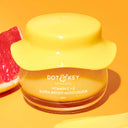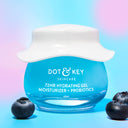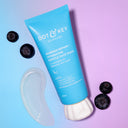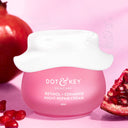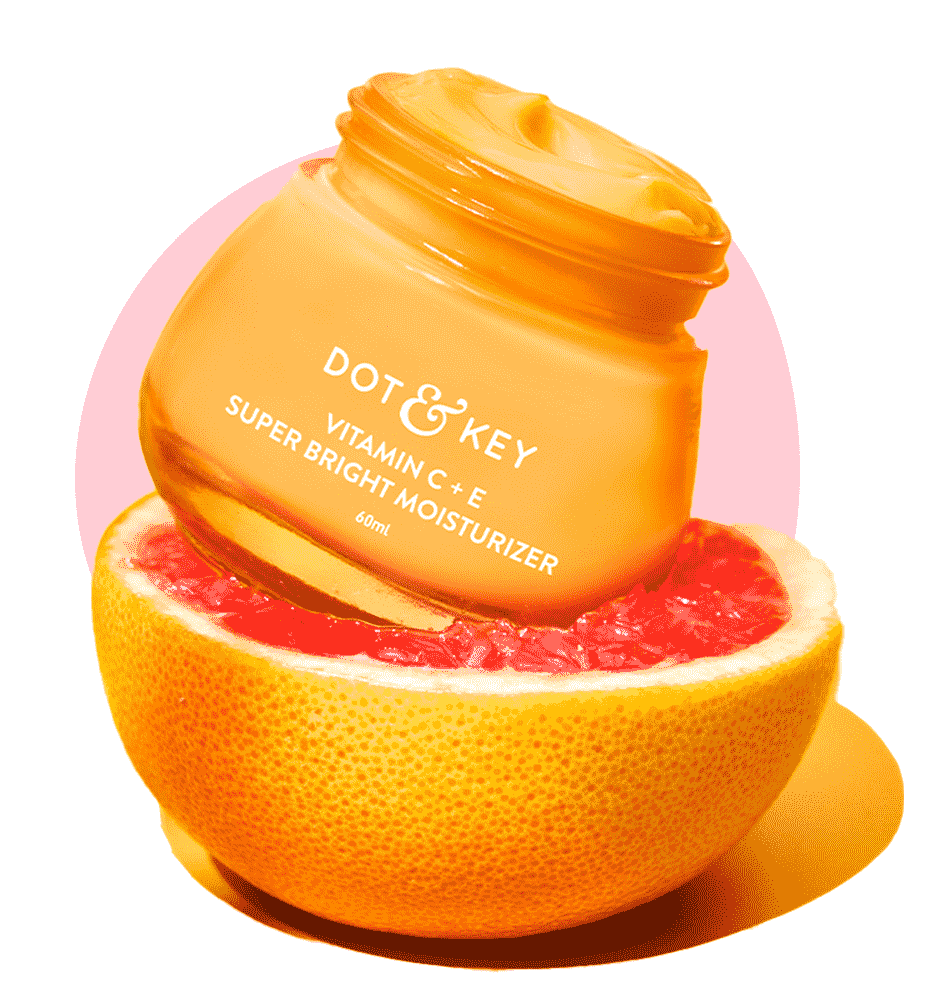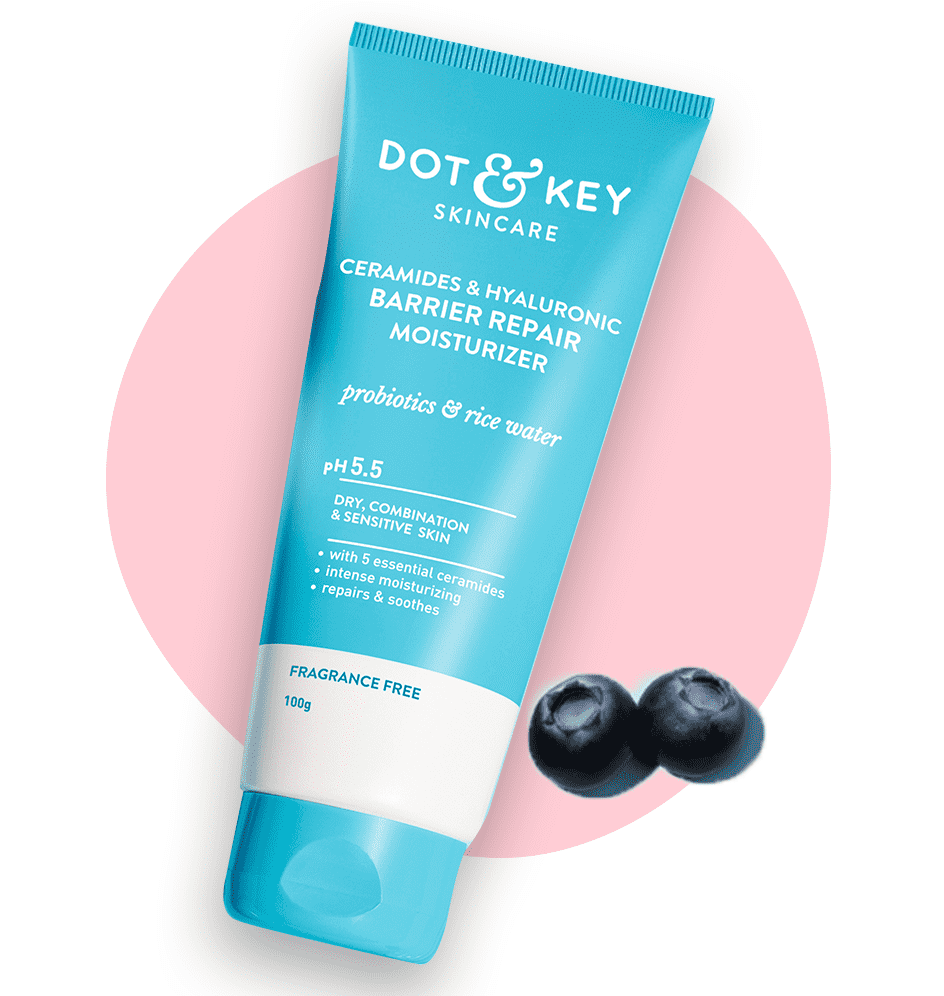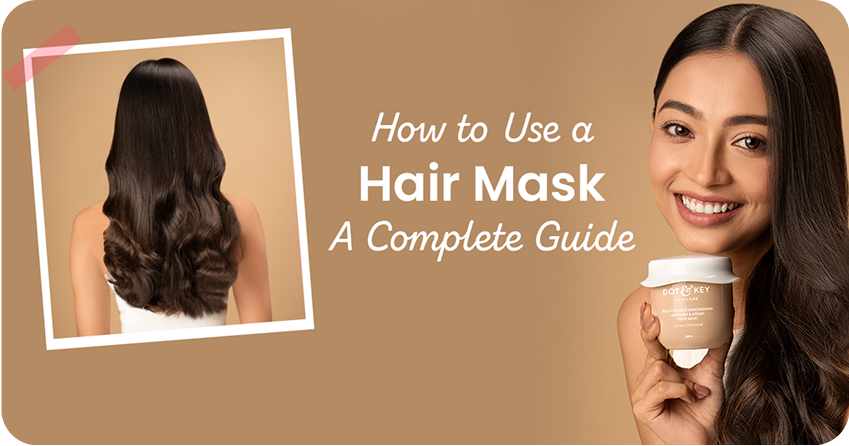
City life can be exciting—but your hair might not agree. Pollution, heat styling, chemical treatments, and even your daily commute can leave your strands dry, frizzy, and lifeless. If you’re craving that silky, salon-fresh feel, a hair mask could be your hair’s ultimate rescue mission.
Unlike regular conditioners, hair masks are intensive treatments packed with concentrated nutrients. They drench your strands in moisture, smooth away frizz, and strengthen from root to tip—making them a must for dry, damaged, curly, or colour-treated hair.
In this complete guide, we’ll walk you through everything you need to know: the benefits of hair masks, how to pick the right one for your hair type, step-by-step application techniques, DIY recipes, common mistakes to avoid, and expert tips to maximize results. By the end, you’ll have the know-how to turn lacklustre locks into healthy, glossy hair that earns compliments everywhere you go.
What Is a Hair Mask?
A hair mask is like a spa day for your hair—an intensive deep-conditioning treatment that works harder (and deeper) than your everyday conditioner. Think of it as a superfood smoothie for your strands, loaded with rich, nourishing ingredients like oils, butters, proteins, and vitamins.
The big difference? Time and intensity. While conditioners are rinsed out in minutes, hair masks stay on longer—anywhere from 5 to 30 minutes (or even overnight)—so their nutrients can penetrate the hair shaft and work their magic.
Hair masks target specific hair concerns like dryness, breakage, frizz, or dullness. Whether you choose a luxe store-bought formula or a simple DIY mix from your kitchen, these treatments often include powerhouse emollients like shea butter, argan oil, or keratin to seal the cuticle, lock in moisture, and shield against future damage. If your hair needs a reset button, a hair mask is the answer.
Benefits of Using Hair Masks
Incorporating hair masks into your routine offers a multitude of advantages that extend beyond basic hydration. Here's a breakdown of the key benefits:
- Deep Hydration and Moisture Restoration: Hair masks replenish lost moisture, especially in dry or dehydrated strands caused by heat tools, colouring, or environmental factors. Ingredients like coconut oil or aloe vera help lock in hydration, leaving hair soft and manageable.
- Damage Repair and Strengthening: For hair that's been through chemical treatments or excessive styling, masks with proteins (like keratin) can temporarily seal split ends and fortify the hair structure, reducing breakage and promoting resilience.
- Frizz Control and Shine Enhancement: By smoothing the hair cuticle, masks minimize frizz and boost natural shine. This is particularly beneficial for curly or coarse hair types that tend to look dull.
- Scalp Health Improvement: Some masks include scalp-nourishing elements like tea tree oil or honey, which can soothe irritation, reduce dandruff, and stimulate blood circulation for healthier growth.
- Colour Protection: For colour-treated hair, specialized masks prevent fading and maintain vibrancy while repairing any processing damage.
- Detangling and Manageability: Masks make hair easier to comb and style, cutting down on post-shower tangles and styling time.
Regular use—typically once a week—can lead to noticeable improvements in just a few applications, making hair masks a staple for long-term hair health.
Step-by-Step Guide: How to Apply a Hair Mask Correctly
Proper application is key to maximizing benefits. Follow this detailed guide for salon-like results:
Step 1: Start with Clean, Damp Hair
For most masks, shampoo your hair first to remove dirt, oil, and buildup. This ensures the treatment can penetrate instead of sitting on top of product residue. After washing, gently squeeze out excess water—your hair should be damp, not dripping.
Step 2: Section Your Hair
Divide your hair into 4–6 sections. This helps ensure even coverage, especially if you have thick or curly hair.
Step 3: Apply from Mid-Lengths to Ends
Place a small amount of mask in your palm and work it through each section, focusing on mid-lengths to ends—the most damaged part of your hair. Avoid applying heavy masks to the scalp unless the product specifically says it’s suitable for scalp use.
Step 4: Distribute Evenly
Use your fingers or a wide-tooth comb to spread the product evenly. This prevents some areas from being oversaturated while others get missed.
Step 5: Boost Absorption with Heat (Optional)
For deeper penetration, cover your hair with a shower cap and wrap it in a warm towel. Gentle heat opens the hair cuticle, allowing nutrients to sink in. You can also use a hair dryer on low heat for a few seconds.
Step 6: Follow the Correct Timing
- Quick treatment masks: 3–5 minutes
- Standard masks: 5–15 minutes
- Deep repair masks: 20–30 minutes
Leaving a mask on for longer than instructed won’t always increase benefits—sometimes it can make your hair heavy or limp.
Step 7: Rinse Thoroughly
Rinse with lukewarm water until the product is completely removed. Finish with a cool water rinse for 10–20 seconds to help seal the cuticle and enhance shine.
Step 8: Dry and Style Gently
Pat your hair dry with a microfiber towel or cotton T-shirt to avoid frizz. Detangle carefully, and avoid heat styling immediately after a deep treatment to let your hair fully absorb the nutrients.
How to Choose the Right Hair Mask
Selecting a hair mask starts with assessing your hair type and goals:
- Identify Your Hair Concerns: Dryness? Damage? Frizz? Colour fade?
- Check Ingredients: Look for natural ones like coconut oil for hydration or banana for shine. Avoid sulfates and parabens if sensitive.
- Consider Hair Texture: Thick hair can handle richer masks; fine hair needs lighter ones.
- Read Reviews and Labels: Opt for pH-balanced products (around 4.5-5.5) for optimal cuticle health.
- Budget and Frequency: Affordable DIY for weekly use; premium store-bought for occasional treats.
If unsure, consult a dermatologist or stylist for personalized recommendations.
How Often Should You Use a Hair Mask?
Frequency depends on your hair:
- Dry/Damaged Hair: 2-3 times weekly.
- Normal Hair: Once a week.
- Oily/Fine Hair: Every 1-2 weeks to avoid greasiness.
- Colour-Treated Hair: Weekly to maintain vibrancy.
Overuse can lead to a buildup or protein overload, making hair stiff. Listen to your hair—if it feels heavy, dial back.
Mistakes to Avoid When Using Hair Masks
To prevent suboptimal results, steer clear of these pitfalls:
- Applying to Dry Hair: Masks absorb better on damp hair.
- Using Too Much Product: This causes greasiness; start small.
- Skipping the Rinse: Residue leads to buildup.
- Leaving It On Too Long: Can make hair limp or stained (for toning masks).
- Not Sectioning Hair: Uneven application misses spots.
- Ignoring Hair Type: Heavy masks on fine hair weigh it down.
- Using on Dirty Hair: Buildup blocks absorption.
DIY Hair Mask Recipes for Every Hair Type
Save money and go natural with these easy recipes. Use once weekly:
For Dry Hair: Avocado and Honey Mask
- Ingredients: 1 ripe avocado, 2 tbsp honey, 1 tbsp olive oil.
- Mix into a paste, apply for 20 minutes. Hydrates deeply.
For Damaged Hair: Egg and Yoghurt Mask
- Ingredients: 1 egg, ½ cup yoghurt, 1 tbsp coconut oil.
- Whisk, apply for 15-20 minutes. Proteins repair strands.
For Frizzy Hair: Banana and Aloe Vera Mask
- Ingredients: 1 banana, 2 tbsp aloe vera gel, 1 tsp argan oil.
- Blend, leave for 10-15 minutes. Smooth and shine.
For Oily Hair: Apple Cider Vinegar Mask
- Ingredients: ¼ cup apple cider vinegar, ½ cup water, lemon juice.
- Dilute, apply to ends for 5 minutes. Balances scalp.
Always rinse well and store leftovers in the fridge for up to 3 days.
Tips and Tricks for Best Results
- Warm It Up: Heat opens cuticles for better absorption.
- Combine with Steam: Use in the shower for enhanced penetration.
- Follow with Conditioner: Seals in benefits for some hair types.
- Protect Pillows: Use a towel or cap for overnight masks.
- Customise: Add essential oils like lavender for scent and scalp health.
- Track Progress: Take before/after photos to see improvements.
Frequently Asked Questions (FAQs)
Can I Use a Hair Mask on Coloured Hair?
Yes, but choose colour-safe formulas to prevent fading.
Is It Better to Apply Hair Masks on Wet or Dry Hair?
Damp hair is ideal for most masks; dry for oil-based ones if extremely dehydrated.
How Long Should I Leave a Hair Mask On?
5-20 minutes typically; overnight for intense treatment.
Do I Need to Shampoo After a Hair Mask?
No, just rinse. Shampoo only if residue remains.
Can Hair Masks Cause Hair Loss?
No, but overuse or allergic reactions could irritate the scalp. Discontinue if issues arise.
What's the Difference Between a Hair Mask and Conditioner?
Masks are more concentrated and left on longer for deeper repair.
Conclusion
By following this guide—from selecting the right type to avoiding common errors—you'll satisfy all your hair care needs and enjoy long-lasting results. Whether opting for store-bought convenience or DIY creativity, consistency is key. Start incorporating hair masks today, and watch your strands transform into their best version. For more personalised advice, experiment and adjust based on your unique needs—your hair will thank you!


